Byeonghun Lee
Towards Lossless Implicit Neural Representation via Bit Plane Decomposition
Feb 28, 2025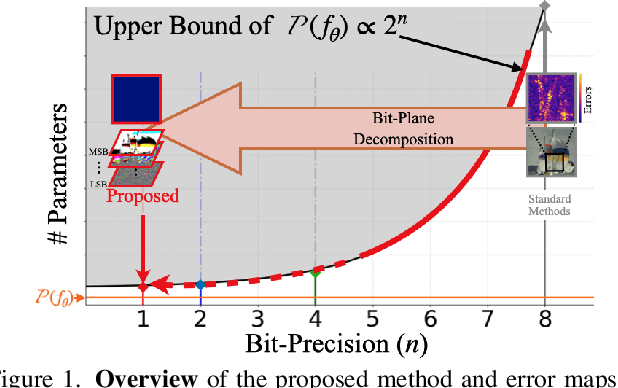


Abstract:We quantify the upper bound on the size of the implicit neural representation (INR) model from a digital perspective. The upper bound of the model size increases exponentially as the required bit-precision increases. To this end, we present a bit-plane decomposition method that makes INR predict bit-planes, producing the same effect as reducing the upper bound of the model size. We validate our hypothesis that reducing the upper bound leads to faster convergence with constant model size. Our method achieves lossless representation in 2D image and audio fitting, even for high bit-depth signals, such as 16-bit, which was previously unachievable. We pioneered the presence of bit bias, which INR prioritizes as the most significant bit (MSB). We expand the application of the INR task to bit depth expansion, lossless image compression, and extreme network quantization. Our source code is available at https://github.com/WooKyoungHan/LosslessINR
BurstM: Deep Burst Multi-scale SR using Fourier Space with Optical Flow
Sep 21, 2024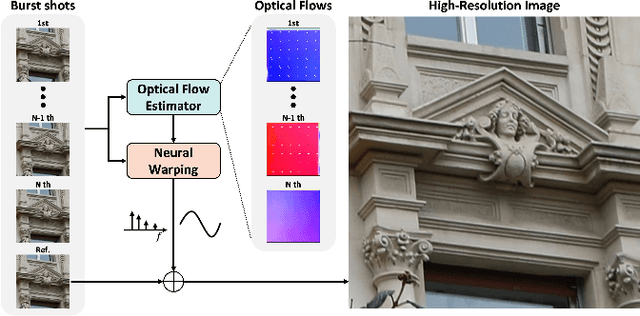
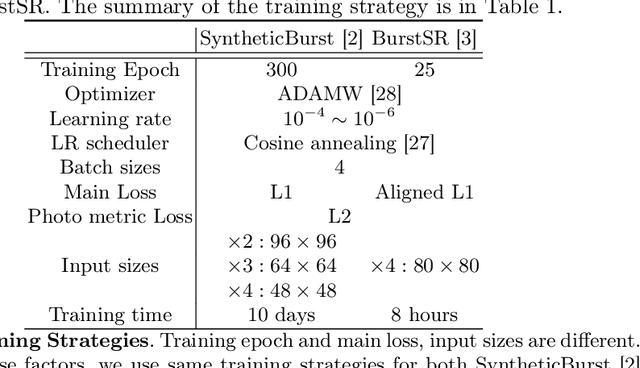


Abstract:Multi frame super-resolution(MFSR) achieves higher performance than single image super-resolution (SISR), because MFSR leverages abundant information from multiple frames. Recent MFSR approaches adapt the deformable convolution network (DCN) to align the frames. However, the existing MFSR suffers from misalignments between the reference and source frames due to the limitations of DCN, such as small receptive fields and the predefined number of kernels. From these problems, existing MFSR approaches struggle to represent high-frequency information. To this end, we propose Deep Burst Multi-scale SR using Fourier Space with Optical Flow (BurstM). The proposed method estimates the optical flow offset for accurate alignment and predicts the continuous Fourier coefficient of each frame for representing high-frequency textures. In addition, we have enhanced the network flexibility by supporting various super-resolution (SR) scale factors with the unimodel. We demonstrate that our method has the highest performance and flexibility than the existing MFSR methods. Our source code is available at https://github.com/Egkang-Luis/burstm
Implicit Neural Image Stitching With Enhanced and Blended Feature Reconstruction
Sep 12, 2023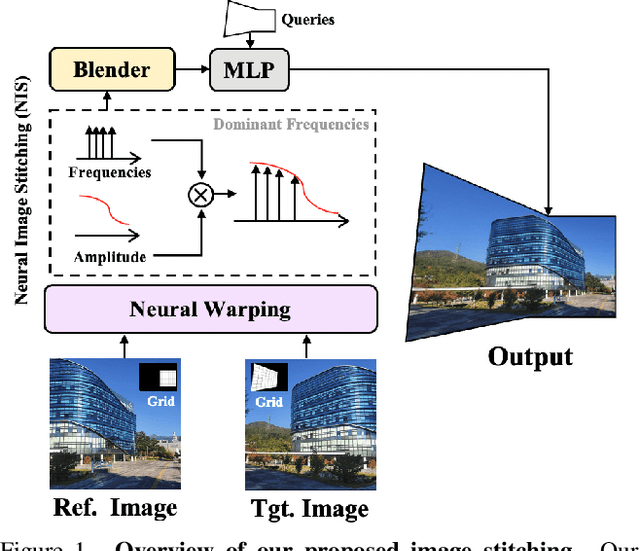
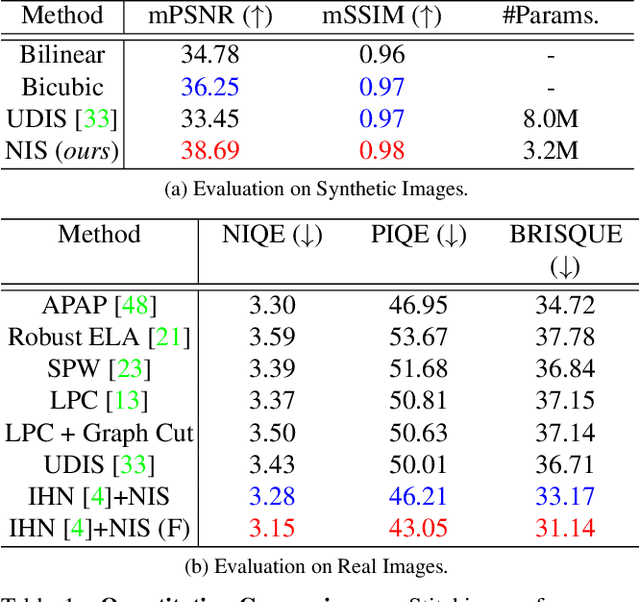

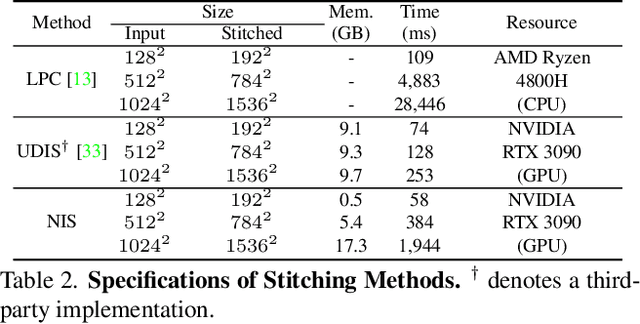
Abstract:Existing frameworks for image stitching often provide visually reasonable stitchings. However, they suffer from blurry artifacts and disparities in illumination, depth level, etc. Although the recent learning-based stitchings relax such disparities, the required methods impose sacrifice of image qualities failing to capture high-frequency details for stitched images. To address the problem, we propose a novel approach, implicit Neural Image Stitching (NIS) that extends arbitrary-scale super-resolution. Our method estimates Fourier coefficients of images for quality-enhancing warps. Then, the suggested model blends color mismatches and misalignment in the latent space and decodes the features into RGB values of stitched images. Our experiments show that our approach achieves improvement in resolving the low-definition imaging of the previous deep image stitching with favorable accelerated image-enhancing methods. Our source code is available at https://github.com/minshu-kim/NIS.
 Add to Chrome
Add to Chrome Add to Firefox
Add to Firefox Add to Edge
Add to Edge